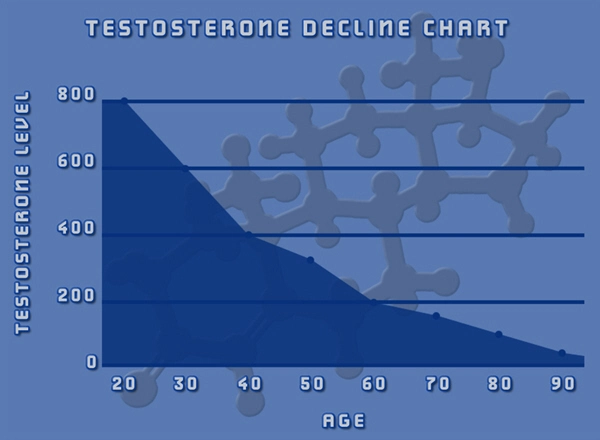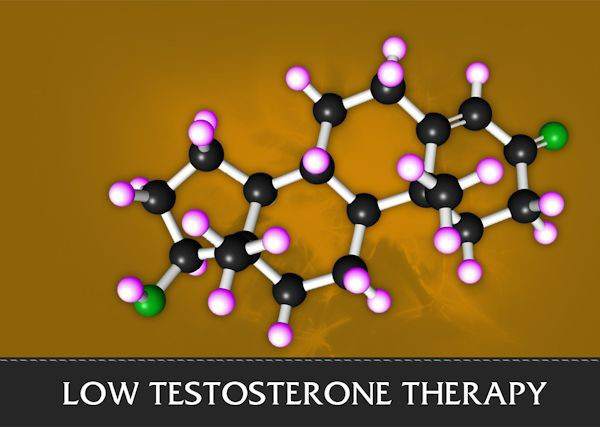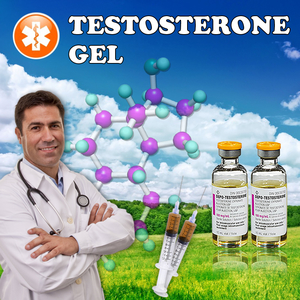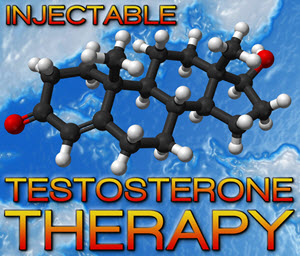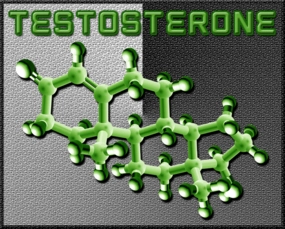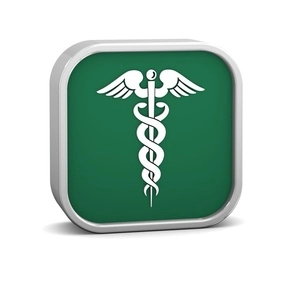
Testosterone injections are one of the most popular forms of testosterone therapy available today.
In fact, low-t injections were the first treatment available for testosterone deficiency. Initially, testosterone was injected daily, but as recombinant biomedical techniques have advanced, most patients only require one injection every 10-14 days.
As of today, Testosterone Cypionate is the most popular form of testosterone HRT injection in the United States.
Most typical testosterone shots are comprised of an ester compound melded with bio-identical testosterone to provide a slow and steady supply of testosterone over an extended period. The following injection protocol applies to all testosterone ester injections.
Video Link: https://vimeo.com/282903638
Video Download: How To Administer A Testosterone Injection Low T Injection Guide
Video Stream: How To Administer A Testosterone Injection Low T Injection Guide
Remember, only use recombinant testosterone with a prescription from a licensed physician, and always follow the instructions of your doctor to the letter!
Testosterone therapy can produce surprising results for patients with clinically diagnosed low-t, but it should always be treated with respect.
Ensure that You're Administering the Correct Testosterone Dosage
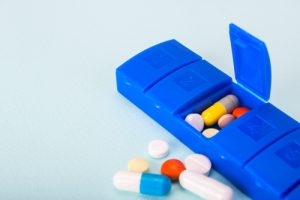 The first step to injecting testosterone is to check and make sure that you are using the right dosage, as prescribed by your doctor.
The first step to injecting testosterone is to check and make sure that you are using the right dosage, as prescribed by your doctor.
In the United States, Testosterone Cypionate is the most popular, but Testosterone Enanthate is also widely prescribed. The ideal testosterone dosage is generally in the range of 100-200 mg/mL.
There is always the chance that you were given the wrong prescription, and taking more or less testosterone than prescribed will either inhibit the benefits of treatment or increase the risk of testosterone side effects, respectively.
Clean the Surface Where You Will Perform the Injection
Before you gather your supplies, find a firm, flat area where you can engage in testosterone injection prep.
Disinfect the area so that you minimize the risk of contamination. Having a mirror available can also be beneficial to make it easier to inject specific muscle tissues.
Gather Testosterone Injection Equipment, Ensuring Sterility
Wash your hands thoroughly and gather up all of the supplies that you'll be using to perform the injection.
Place them on your designated administration site. You'll need your testosterone equipment, as well as sterilized gloves, alcohol swabs, and a SHARPS container, or another suitable disposal container that is thick enough to prevent the needle from piercing through the vessel.
Never reuse a syringe or needle. This is highly dangerous and vastly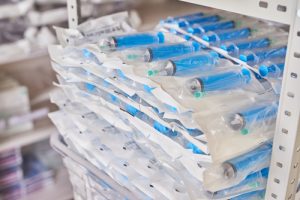 increases your risk of contracting an infection or blood-borne diseases.
increases your risk of contracting an infection or blood-borne diseases.
Your needle should be capped, sealed, and clean until the time for injection.
Also, most patients opt to use two separate needles during the injection process. A wide-bore needle makes it easier to draw the testosterone into the syringe because bio-identical testosterone is quite oily and viscous.
Unfortunately, a larger needle also leads to more pain. For this reason, you'll likely trade out needles before injection, to a smaller needle that vastly reduces the pain associated with the injection.
If the needle or syringe is ever dropped or contaminated during the low-t injection process, throw away the contaminated equipment and start over.
Clean Hands and Put On Gloves
Before administering your testosterone dose, wash your hands thoroughly with water and antibacterial soap.
After your hands are clean and dry, put on clean medical gloves. From this point forward, you should only touch safe and decontaminated surfaces. Change gloves if you make contact with any other surfaces or objects.
Draw Dosage into Syringe
Every testosterone prescription has a specific recommended dosage. Always be sure to inject the correct low-t therapy dose every time.
Always do the math and make sure you'll have the intended dose. Dependent on the density of the testosterone serum, the total volume of testosterone that you'll need will differ.
The first thing that you should do from this point is to take your syringe and draw back the plunger until the volume of air in the syringe equals your intended dosage. It's important to inject air into the medication vial before drawing testosterone because it vastly increases the ease at which the viscous testosterone serum is drawn.
Proceed to clean the penetrable lid of the testosterone vial with an alcohol wipe, then pierce the cap with the needle.
Pump the air from the syringe into the bottle, then flip the vial and syringe carefully, so that the needle is entirely submerged in the low-t serum. Drawback the plunger until your syringe reads the correct testosterone dosage.
Switch to a Smaller-Gauge Needle
At this point, you will change to a thinner needle to make the injection much more tolerable. Flip the syringe so that the needle points toward the ceiling. Pull the plunger slightly to let a slight amount of air into the syringe, so that no testosterone spills. Press the cap back onto the needle and unscrew the needle from the syringe carefully.
Set the needle aside, or otherwise safely dispose of it, then take the smaller needle and carefully twist it onto the syringe, then uncap the new syringe.
Aspirate the Syringe
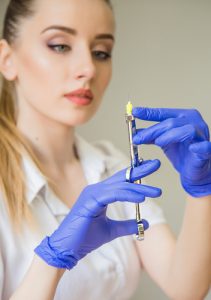 For your immediate safety, you'll need to evacuate any bubbles from the syringe.
For your immediate safety, you'll need to evacuate any bubbles from the syringe.
If bubbles of air enter your bloodstream as a result of poor injection practices, this can lead to a dangerous and potentially fatal condition known as an embolism.
To prevent this from happening, you'll look at the syringe as it's held with the needle pointing up. Tap on the side of the syringe so that any bubbles which are clinging to the wall of the syringe float to the top.
After all of the air is concentrated at the needle tip, carefully push the plunger until all air is evacuated and a small curve of the Testosterone Serum rounds off the edge off of the tip of the needle.
Sterilize the Testosterone Injection Site
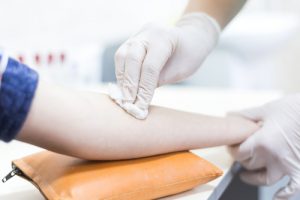 As we mentioned previously, the majority of testosterone shots are delivered intramuscularly.
As we mentioned previously, the majority of testosterone shots are delivered intramuscularly.
The two most common sets of muscles to administer a low-t injection are the glutes and the vastus lateralis.
In layman's terms, those are your butt cheeks and the upper area of the outer thigh, respectively. The deltoids of the upper arm are often chosen as an injection site as well.
In general, the best places to perform an injection are the larger muscles with less subcutaneous fat between the skin and the muscle tissue because this minimizes the pain associated with the dose.
It's crucial to choose an injection site carefully, to both reduce pain and vastly reduce the risk of puncturing a blood vessel or damaging a nerve.
At your designated injection site, sterilize the skin with an alcohol pad in the area where you will administer the injection. This eliminates skin bacteria, mitigating the risk of infection.
It's important to note that there are blood vessels and nerves in the gluteal region, so the best place to inject testosterone into the glutes is on the upper, outside corner of the muscle.
Inject the Bio-Identical Testosterone
Now comes the time for injection. Tilt the syringe at a right angle to your designated injection site. When ready, dart the needle into the skin in a careful and steady, yet quick, manner.
Pull back the plunger very slightly to make sure that you didn't accidentally knick a blood vessel. If you see blood enter the syringe, then immediately withdraw the needle and choose a different location.
If you did not see blood, depress the plunger at a measured and constant rate until the medication is entirely dispensed. Pull out the needle quickly, yet carefully.
During injection, you might experience mild burning, pressure sensation, stinging, or discomfort. This is nothing to worry about.
If you experience shooting pain, this means that you might have struck a nerve, and you should cancel the injection and contact your doctor. If the pain becomes worse over time, you should also give your doctor a call.
Clean the Injection Site
After you've completed the injection, set aside the needle, and check for bleeding. If you are bleeding, use a sterilized bandage or cotton ball to protect the site of injection. After you've completed the injection process, throw away the syringe, needle, and any other contaminated products into their appropriate containers.
Never throw away needles and other bio-hazard products into the trash can. Return them to your physician or a pharmacy for disposal. It's also important to never throw away excess testosterone or other medications into the trash or down the drain.
It is okay, however, to throw away empty testosterone vials and bottles usually.
Remember to always talk to your doctor if you experience any symptoms or side effects that you believe may be related to your testosterone therapy!
Testosterone Injections are Easier and Simpler Than They May Appear
In this article, we've attempted to explain the process of how to inject intramuscular testosterone thoroughly. This information should only be considered for informational purposes, and you should always follow your doctor's instructions precisely.
Once you've learned how to inject testosterone, it becomes a simple and easy process, but you should always take the time to thoughtfully and deliberately perform the steps involved to ensure safety!
Reference
Testosterone Intramuscular Injection video
Contact Us Today For A Free Consultation

- Testosterone for Women [Last Updated On: December 1st, 2023] [Originally Added On: December 29th, 2013]
- Testosterone Androgen [Last Updated On: December 11th, 2023] [Originally Added On: December 29th, 2013]
- Testosterone and Body Building [Last Updated On: December 14th, 2023] [Originally Added On: December 30th, 2013]
- Testosterone Levels [Last Updated On: December 6th, 2023] [Originally Added On: December 31st, 2013]
- Testosterone Gel, Cream, and the Testosterone Patch [Last Updated On: November 28th, 2023] [Originally Added On: December 31st, 2013]
- Buy Testosterone | Types of Testosterone Replacement Therapy Programs, Injections, Cream and Gel [Last Updated On: December 13th, 2023] [Originally Added On: December 31st, 2013]
- Buy Testosterone Injections Online, Testosterone Prescription for Low T, Testosterone Replacement Therapy [Last Updated On: October 16th, 2020] [Originally Added On: January 1st, 2014]
- Aging and Testosterone Replacement Therapy [Last Updated On: December 12th, 2023] [Originally Added On: January 3rd, 2014]
- What Causes Low Testosterone [Last Updated On: December 10th, 2023] [Originally Added On: January 7th, 2014]
- Hormone Levels in Men [Last Updated On: December 4th, 2023] [Originally Added On: January 12th, 2014]
- Hormone Level Testing [Last Updated On: November 29th, 2023] [Originally Added On: January 13th, 2014]
- Types of Testosterone Products and Delivery [Last Updated On: December 8th, 2023] [Originally Added On: January 22nd, 2014]
- Testosterone Therapy Helps Men with Low-T Ward Off Prostate Cancer [Last Updated On: November 19th, 2021] [Originally Added On: December 29th, 2019]
- The Importance of Dietary Fat for Testosterone Production [Last Updated On: November 27th, 2021] [Originally Added On: January 2nd, 2020]
- Testosterone Deficiency and Low-T at Epidemic Levels Among Men in the United States [Last Updated On: November 18th, 2021] [Originally Added On: May 17th, 2020]
- The Effects of Testosterone Therapy on Male Patients -- Who Should Use Testosterone? [Last Updated On: December 20th, 2023] [Originally Added On: June 16th, 2020]
- Does Ibuprofen Contribute to Low Testosterone? [Last Updated On: January 27th, 2024] [Originally Added On: June 20th, 2020]
- The Link Between Testosterone and Lower Rates of Autoimmune Diseases Among Men [Last Updated On: January 30th, 2024] [Originally Added On: June 21st, 2020]
- Weight Cycling and the Problem with Crash Dieting [Last Updated On: November 8th, 2021] [Originally Added On: July 30th, 2020]
- Reexamining Bio-Identical Testosterone Therapy [Last Updated On: November 21st, 2021] [Originally Added On: August 12th, 2020]
- Understanding how Muscle and Fat Impact Body Mass, Weight, and Health [Last Updated On: November 10th, 2021] [Originally Added On: August 25th, 2020]
- The Role of Nitric Oxide in Cancer Proliferation And Prevention [Last Updated On: November 14th, 2021] [Originally Added On: August 26th, 2020]
- Understanding Heartburn in the 21st Century [Last Updated On: November 12th, 2021] [Originally Added On: August 28th, 2020]
- What is Erectile Dysfunction? [Last Updated On: November 11th, 2021] [Originally Added On: August 30th, 2020]
- Sermorelin Acetate Drug Information [Last Updated On: November 8th, 2021] [Originally Added On: August 31st, 2020]
- Exercise and Mental Health [Last Updated On: November 7th, 2021] [Originally Added On: September 1st, 2020]
- The Importance of Proteins, Carbs, and Fats [Last Updated On: March 11th, 2024] [Originally Added On: September 2nd, 2020]
- Low-T Treatment Before and After -- How Testosterone Therapy Improves Vitality [Last Updated On: November 8th, 2021] [Originally Added On: September 6th, 2020]
- Changes to LabCorp Guidelines for Low-T Diagnosis and How They Impact Your Treatment [Last Updated On: November 28th, 2021] [Originally Added On: September 22nd, 2020]
- The Effects of Testosterone on Asthma Prevalence Among Men and Women [Last Updated On: February 19th, 2024] [Originally Added On: October 6th, 2020]
- 7 Exercises to Elevate Testosterone Levels [Last Updated On: November 20th, 2021] [Originally Added On: October 10th, 2020]
- Vitamin A is Essential for Good Health - Are You Getting Enough ? [Last Updated On: November 10th, 2021] [Originally Added On: October 14th, 2020]
- Testosterone and Diet – How to Support Testosterone Levels with Healthy Eating [Last Updated On: November 20th, 2021] [Originally Added On: October 29th, 2020]
- The Significance of Telomeres in Stem Cell Treatments [Last Updated On: March 16th, 2024] [Originally Added On: November 27th, 2020]
- The Influence of Testosterone on Protective Mating Behaviors in Men [Last Updated On: January 25th, 2024] [Originally Added On: December 6th, 2020]
- The Role of Testosterone in Women's Health [Last Updated On: December 24th, 2023] [Originally Added On: December 7th, 2020]
- Testosterone Promotes Bone Health and Can Help Treat Osteoporosis [Last Updated On: February 15th, 2024] [Originally Added On: December 17th, 2020]
- The Relationship Between Testosterone and Cortisol [Last Updated On: November 7th, 2021] [Originally Added On: December 19th, 2020]
- The Importance of Sex Hormone-Binding Globulin (SHBG) for Healthy Testosterone Levels [Last Updated On: March 9th, 2024] [Originally Added On: December 28th, 2020]
- 12 Health Issues That Can Kill Libido and Limit Sexual Performance [Last Updated On: November 17th, 2021] [Originally Added On: January 3rd, 2021]
- 4 Foods to Boost Your Testosterone Levels [Last Updated On: February 7th, 2024] [Originally Added On: January 4th, 2021]
- Low Testosterone Symptoms [Last Updated On: December 31st, 2023] [Originally Added On: January 7th, 2021]
- Is Male Menopause Real? The Science of Andropause [Last Updated On: January 15th, 2024] [Originally Added On: January 11th, 2021]
- Relieve Fatigue and Increase Energy with Testosterone Replacement Therapy [Last Updated On: January 16th, 2024] [Originally Added On: January 16th, 2021]
- Testosterone Levels Associated with Serotonin Activity in the Brain [Last Updated On: March 26th, 2024] [Originally Added On: January 19th, 2021]
- Grumpy Old Man Syndrome – Causes and Treatments [Last Updated On: November 20th, 2021] [Originally Added On: January 22nd, 2021]
- The Effects of Beer on Testosterone Production and Gynecomastia [Last Updated On: March 21st, 2024] [Originally Added On: January 30th, 2021]
- Testosterone Frequently Asked Questions [Last Updated On: February 6th, 2024] [Originally Added On: February 26th, 2021]
- Testosterone Supplements: Vitamin and Amino Acid Pills Versus Real Testosterone [Last Updated On: September 14th, 2023] [Originally Added On: March 1st, 2021]
- Testosterone Side Effects, Risks, Dangers and Negative Effects [Last Updated On: August 24th, 2023] [Originally Added On: March 2nd, 2021]
- Testosterone for Men [Last Updated On: February 20th, 2024] [Originally Added On: April 13th, 2021]
- Testosterone Testing [Last Updated On: August 25th, 2023] [Originally Added On: May 7th, 2021]
- Hormone Replacement Therapy: Commonly Asked Questions [Last Updated On: February 20th, 2024] [Originally Added On: June 16th, 2023]
Word Count: 1513


